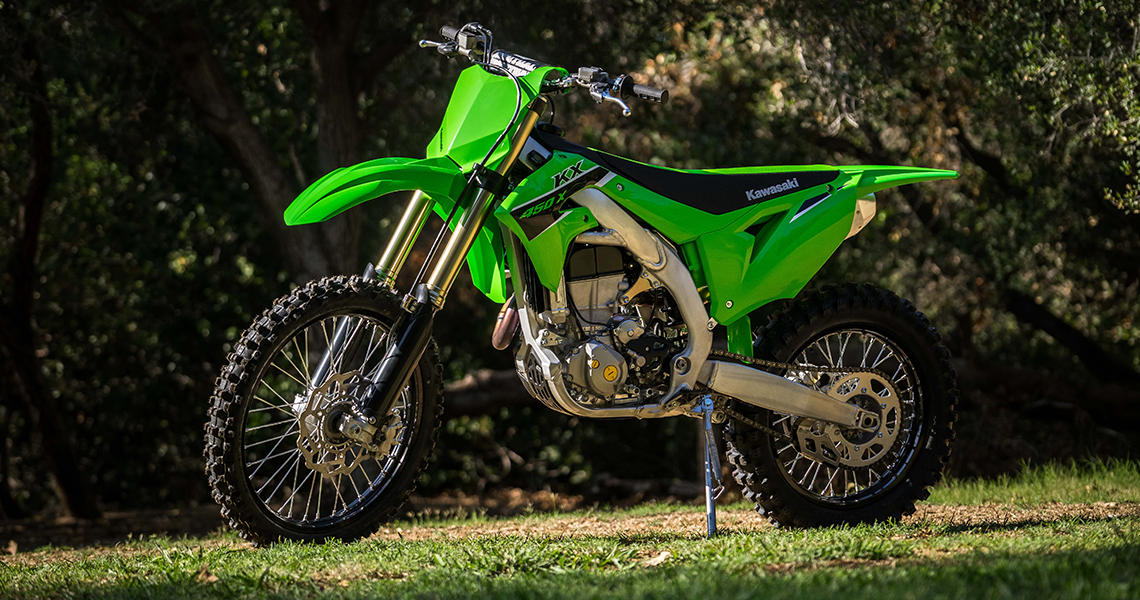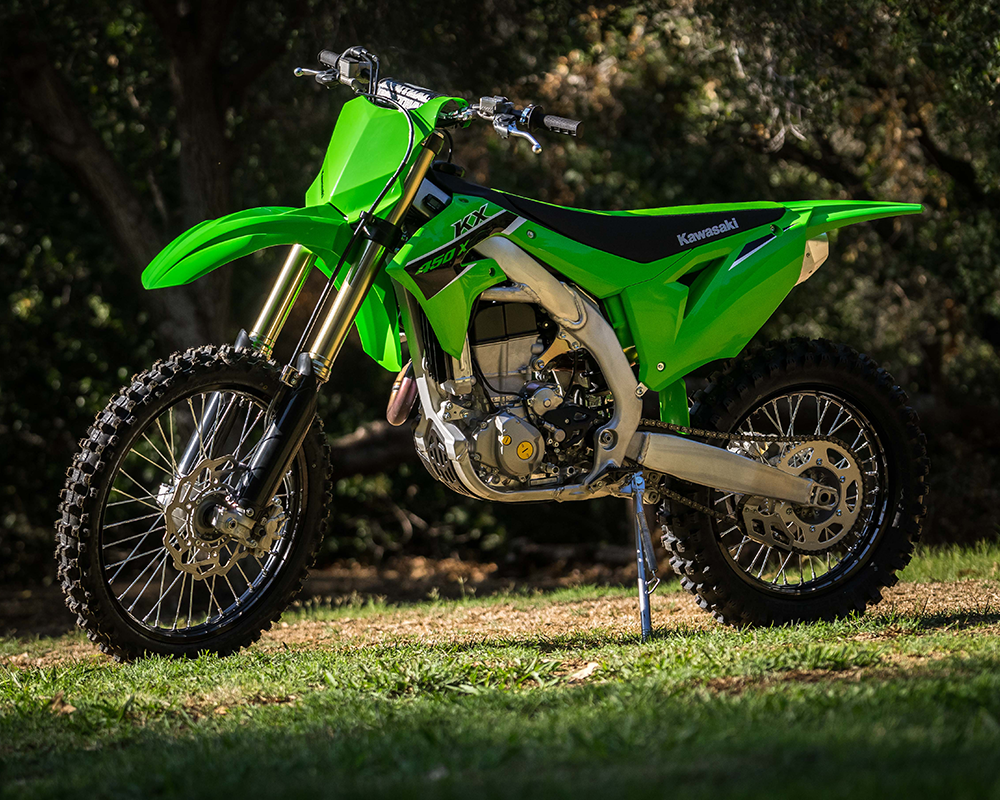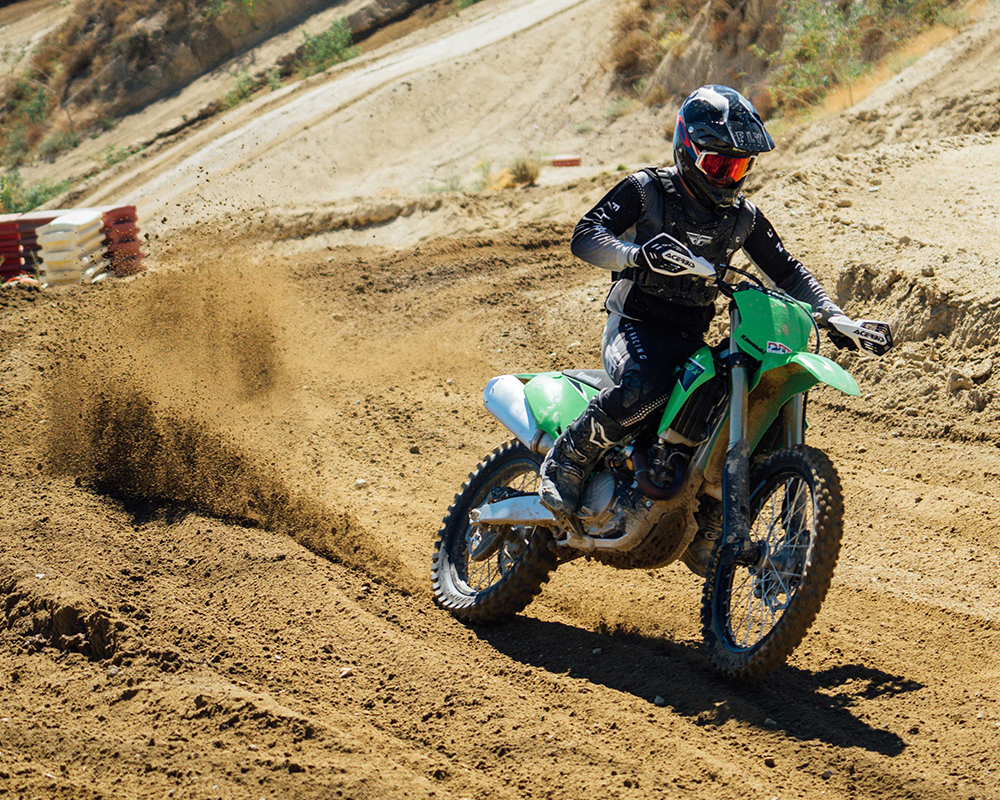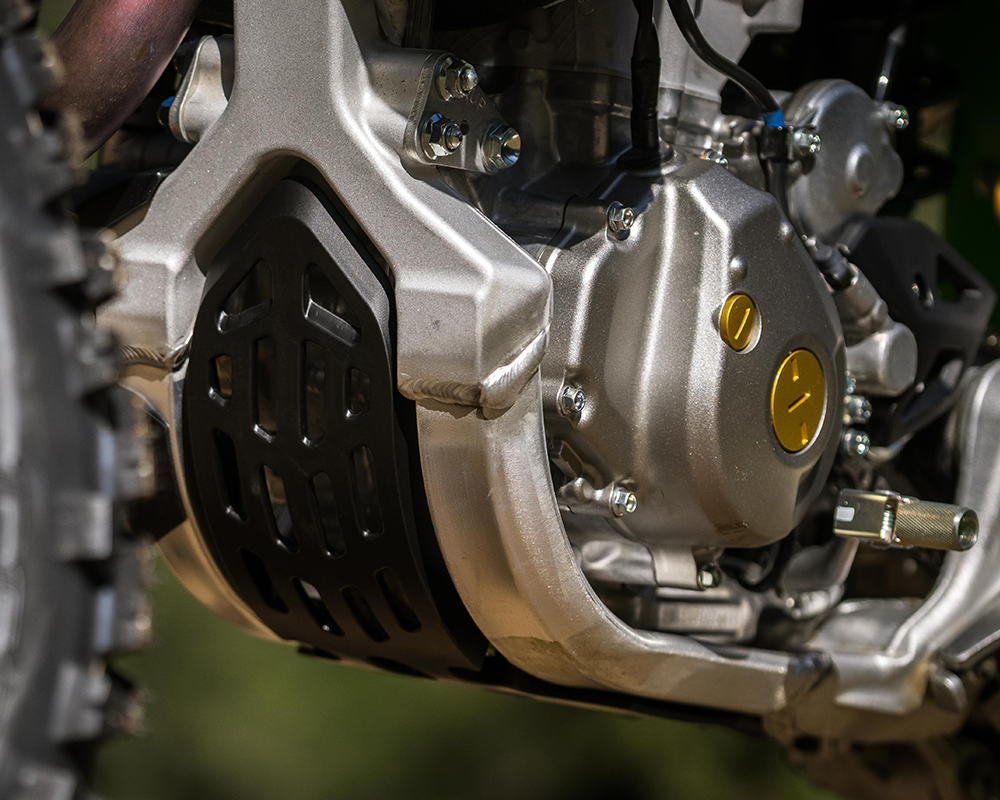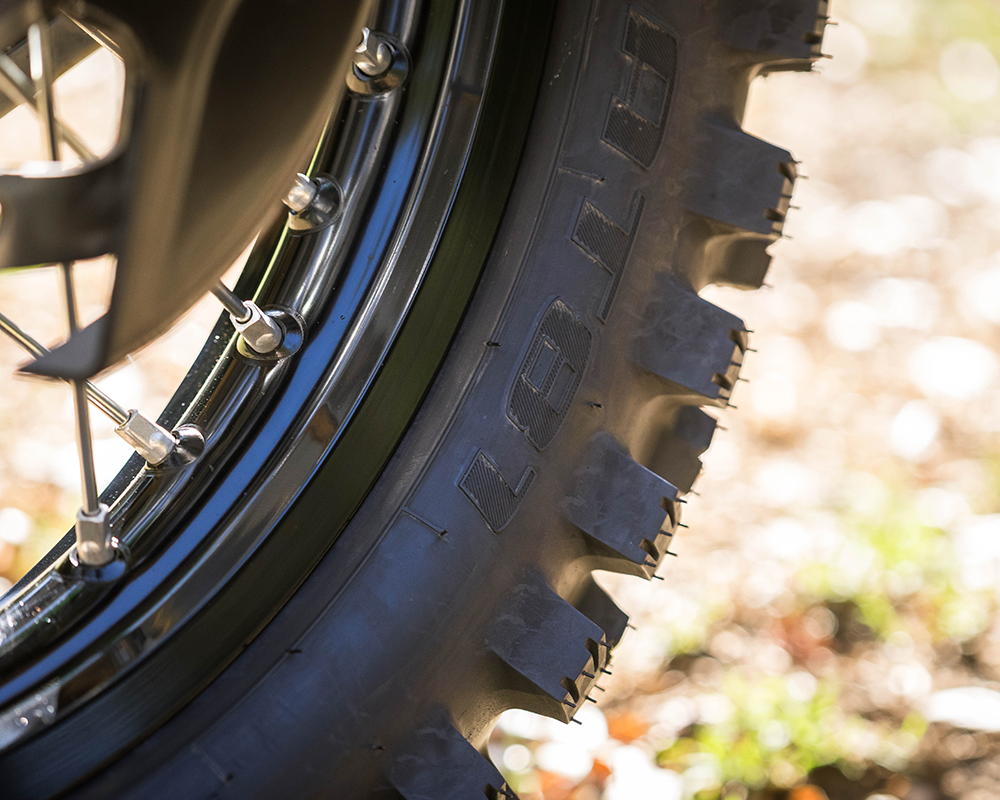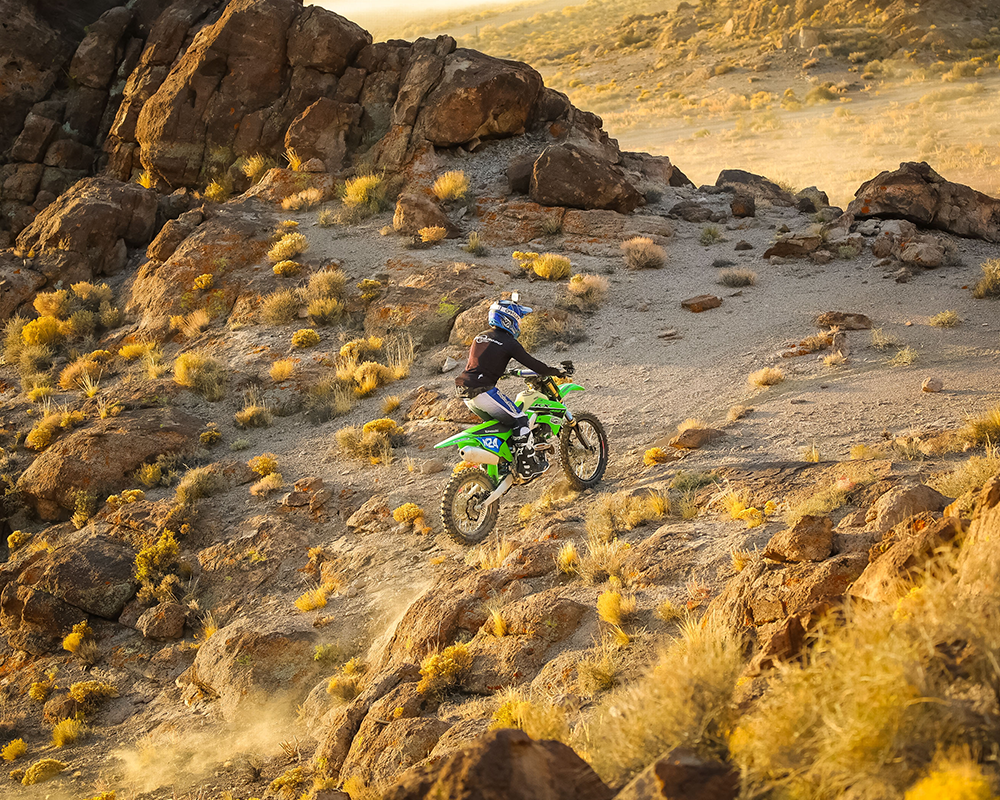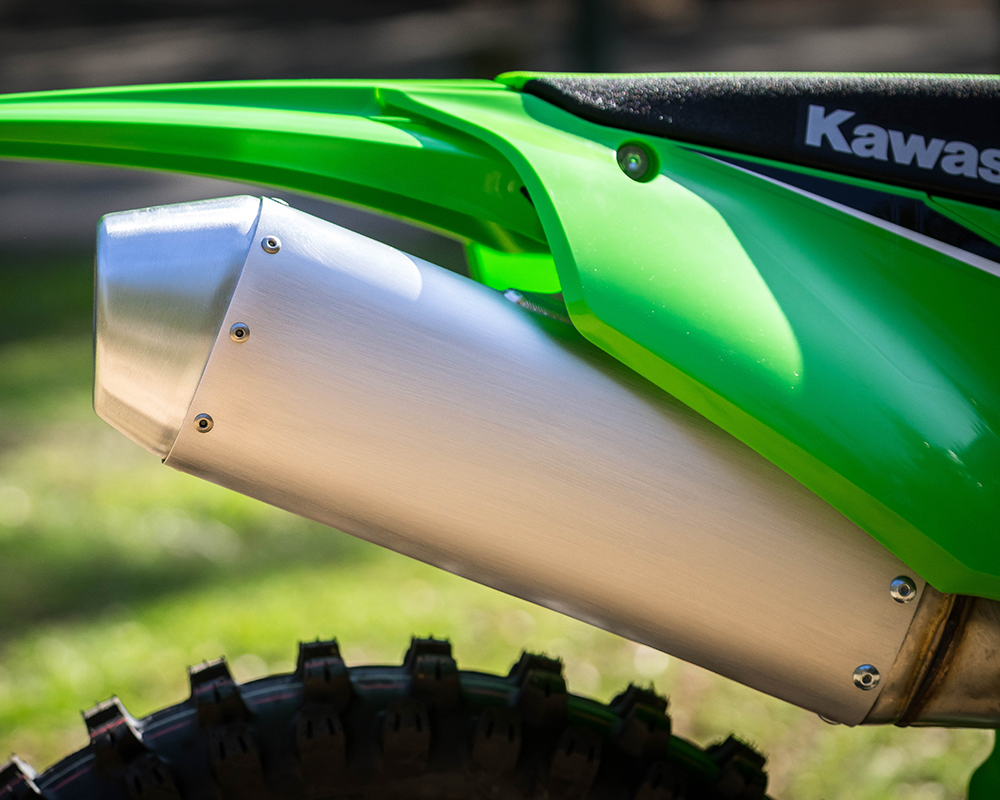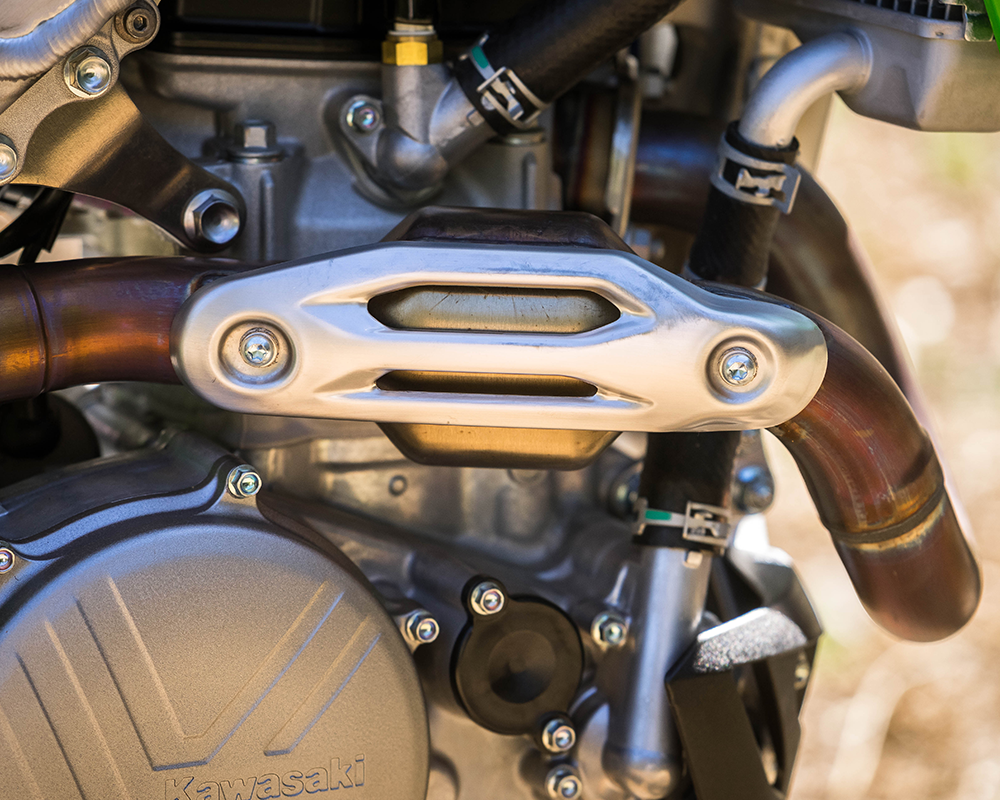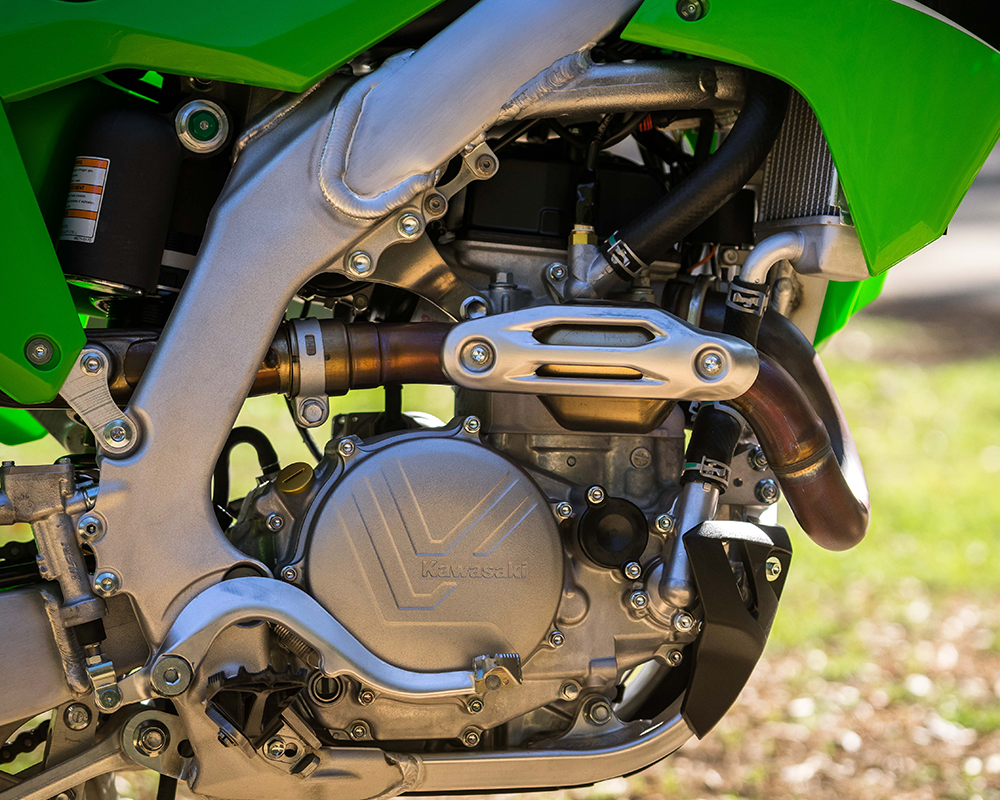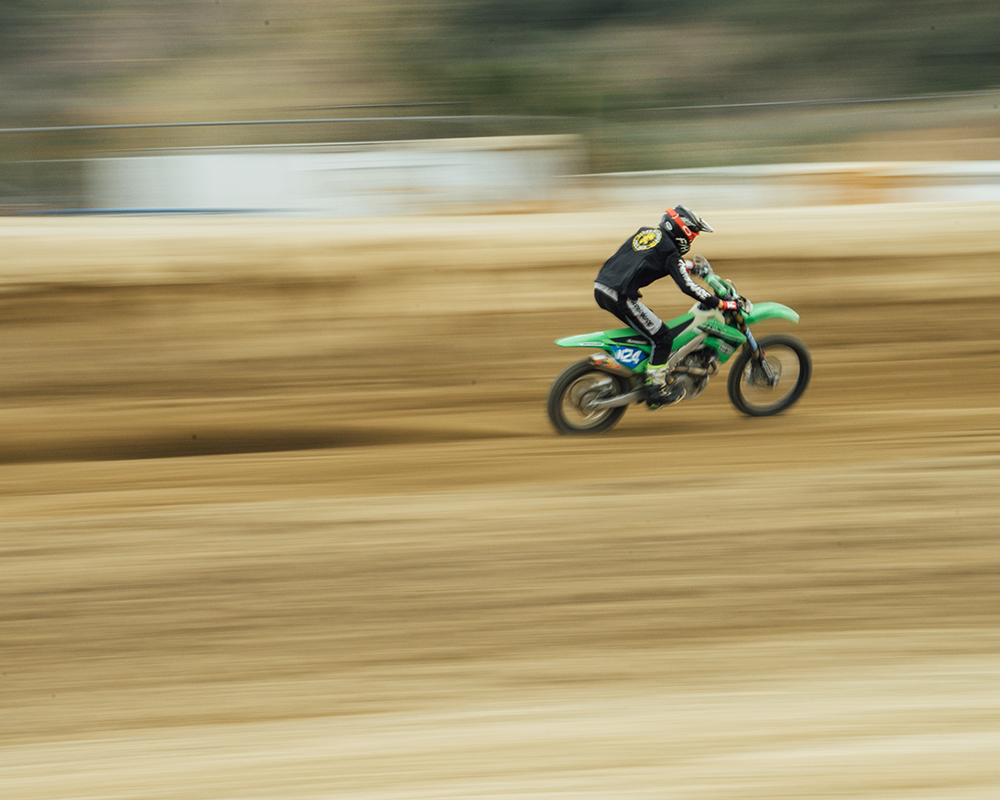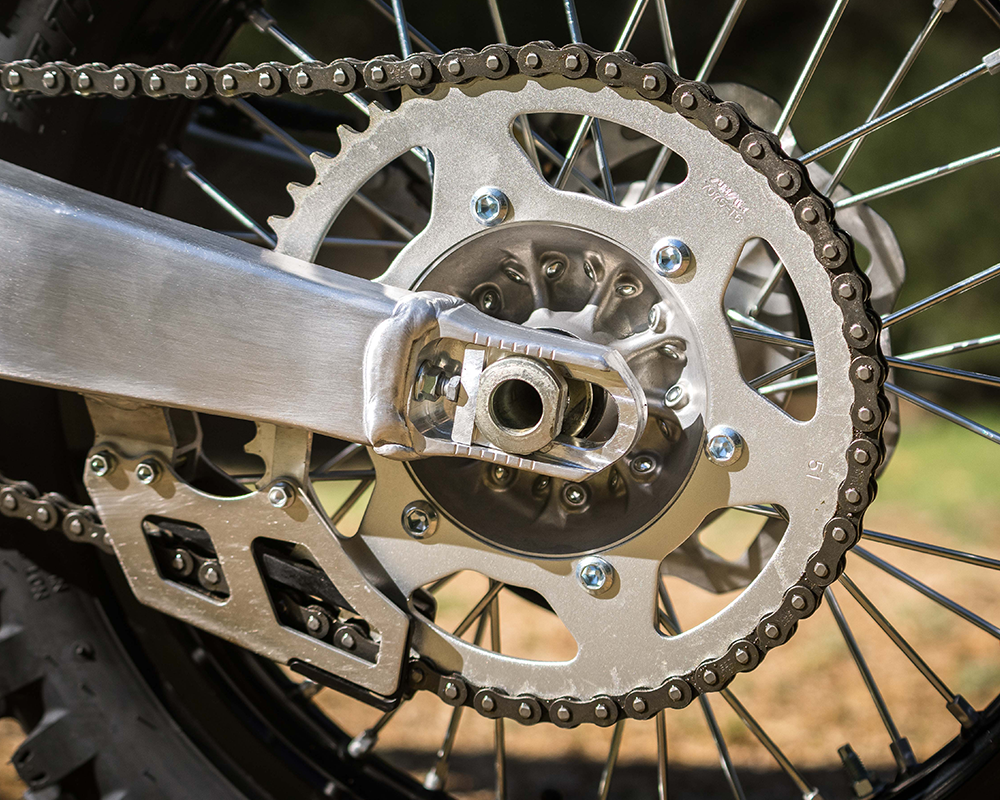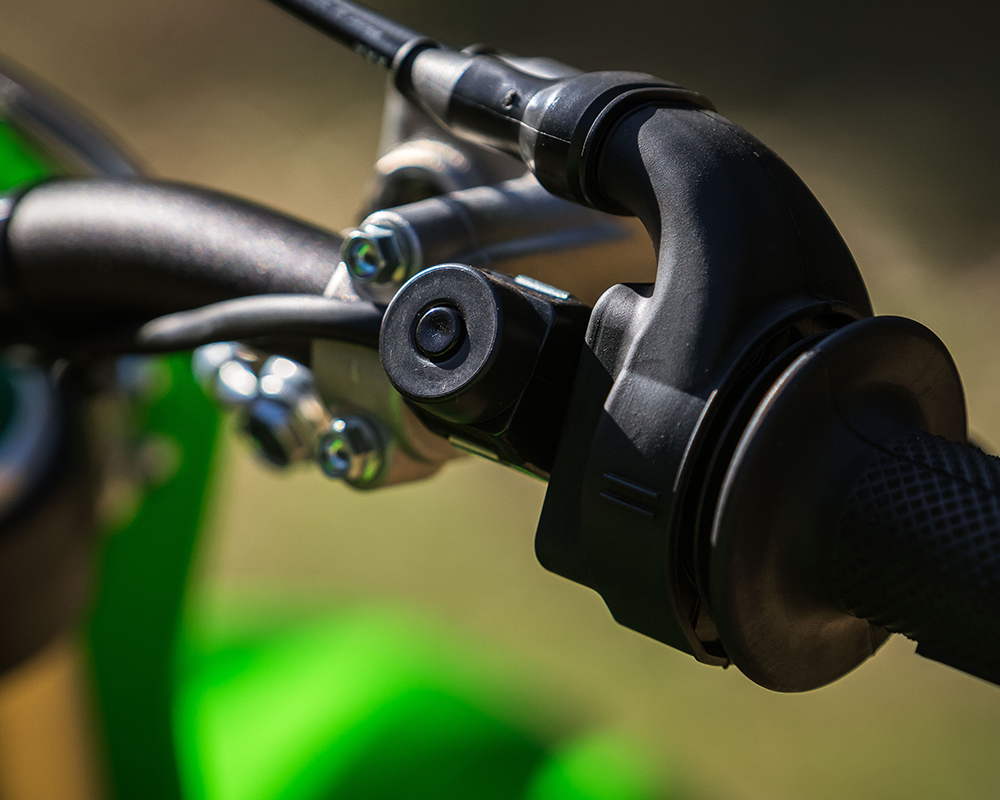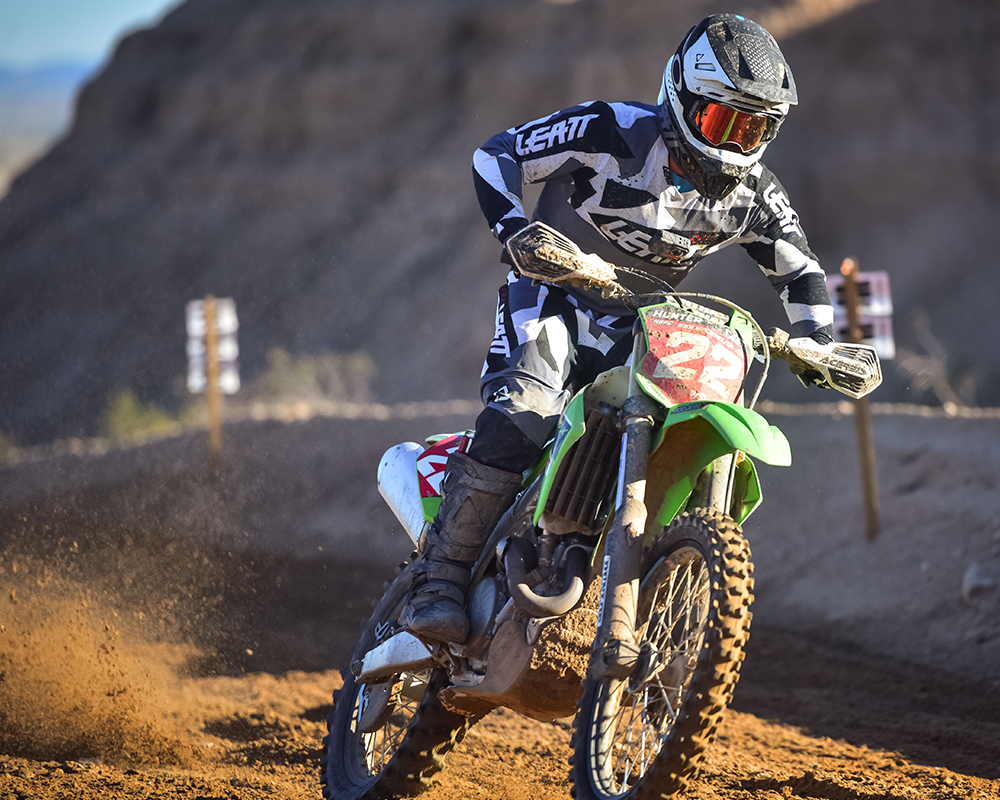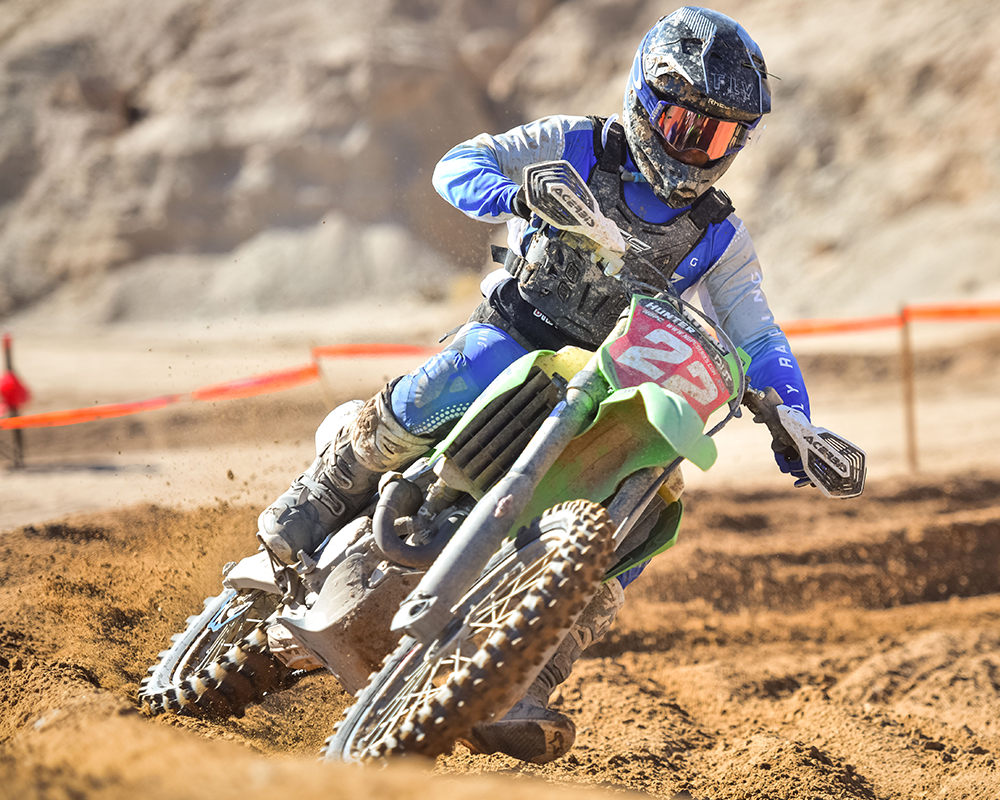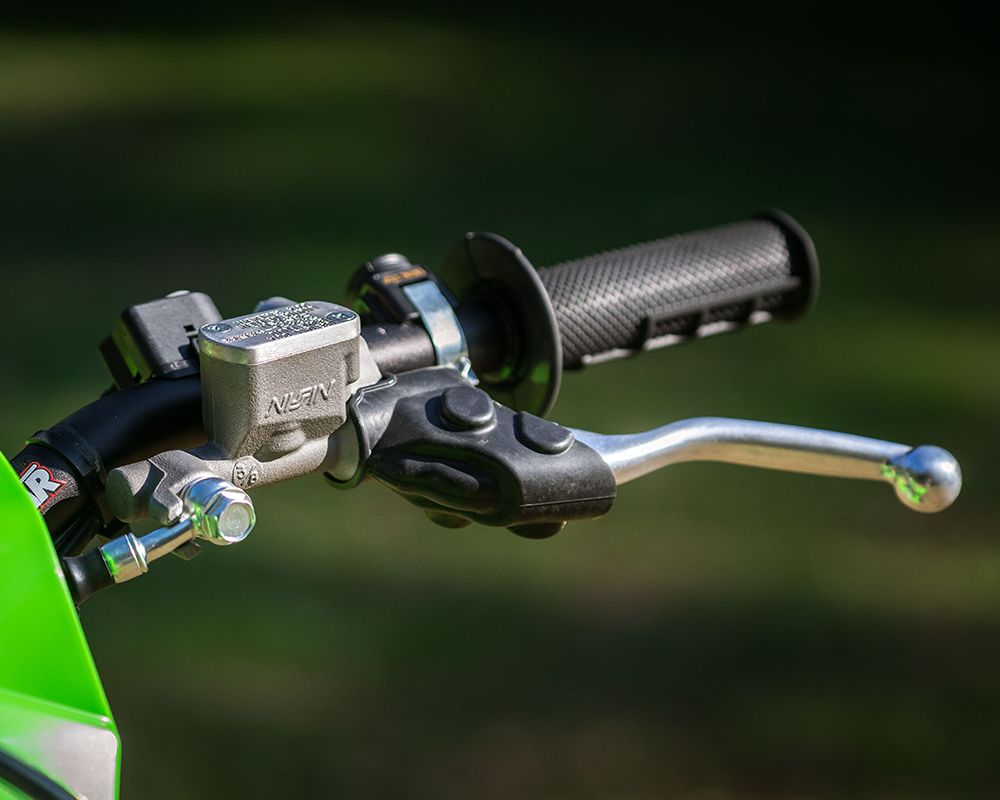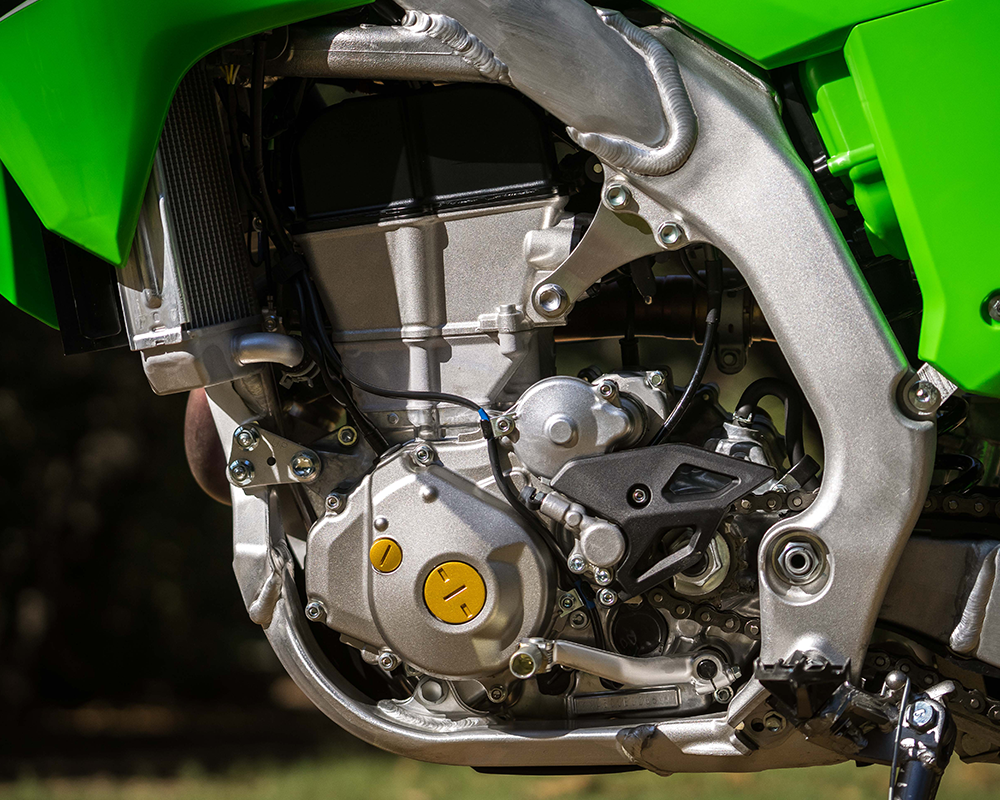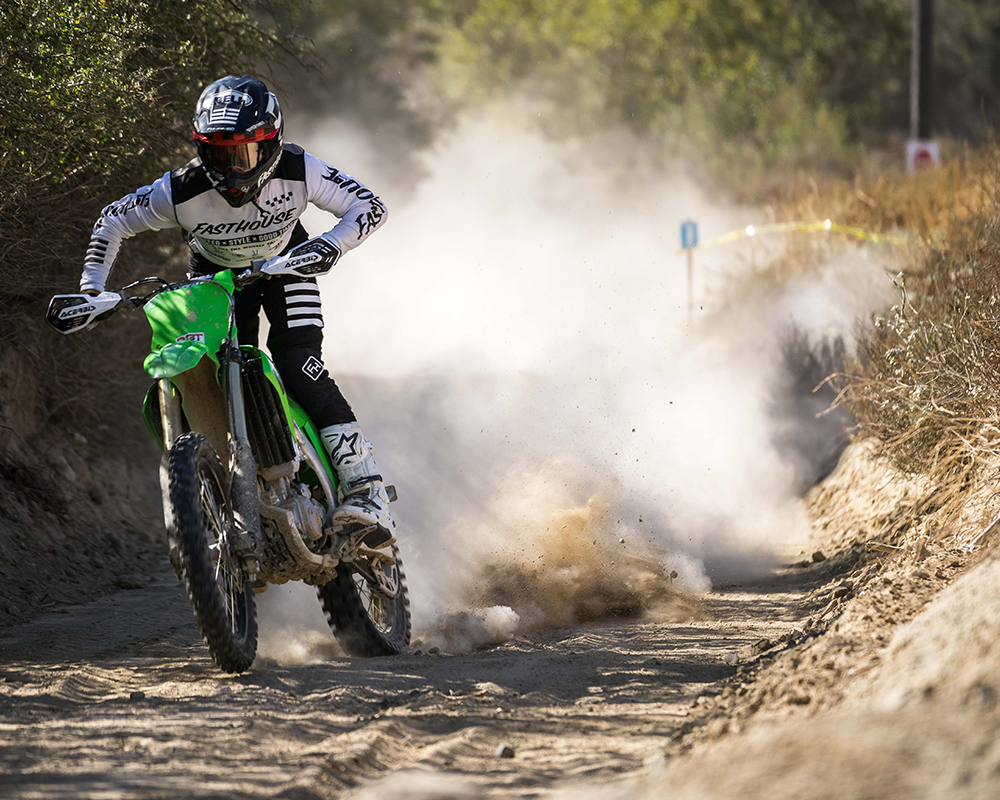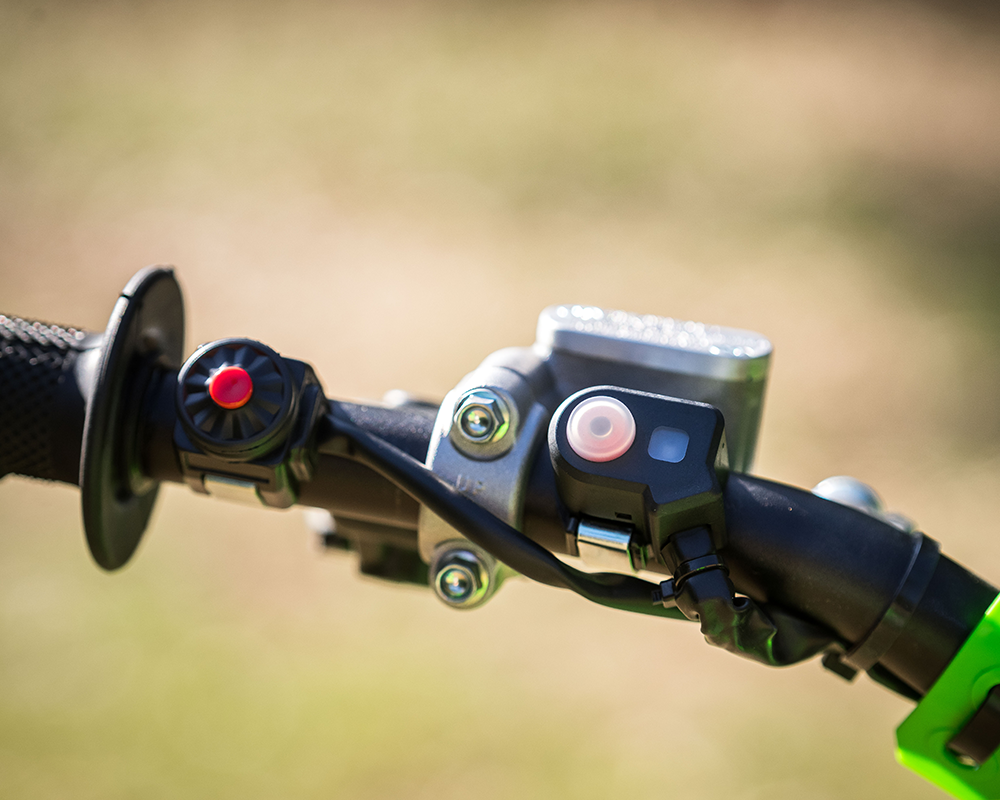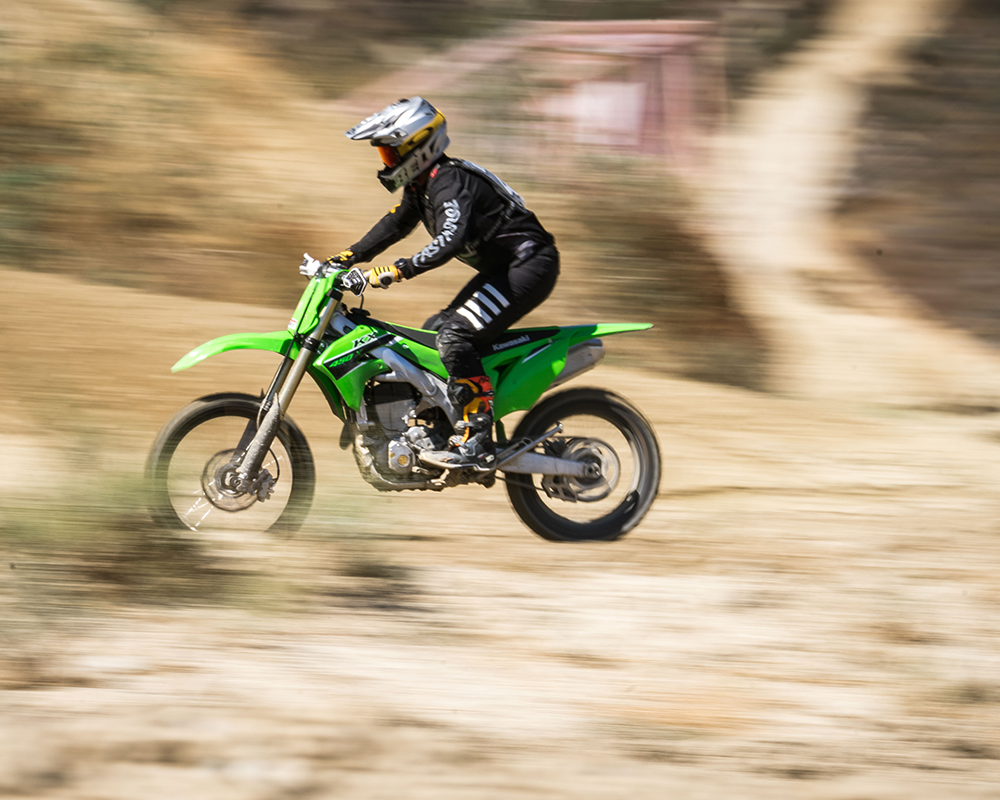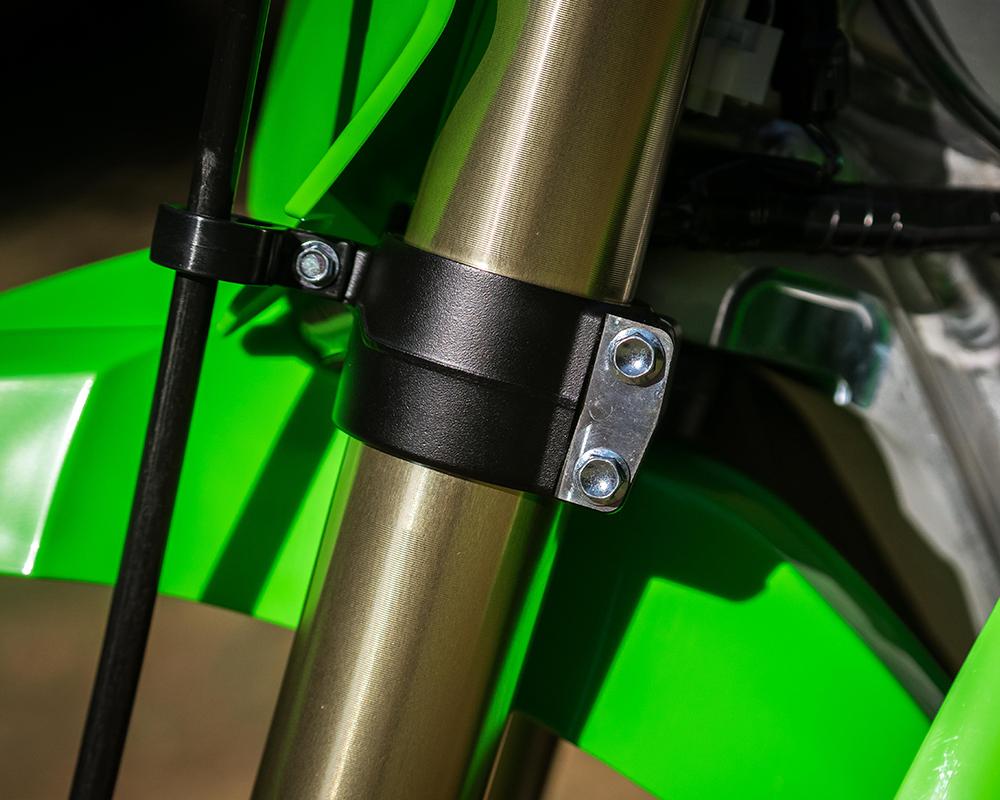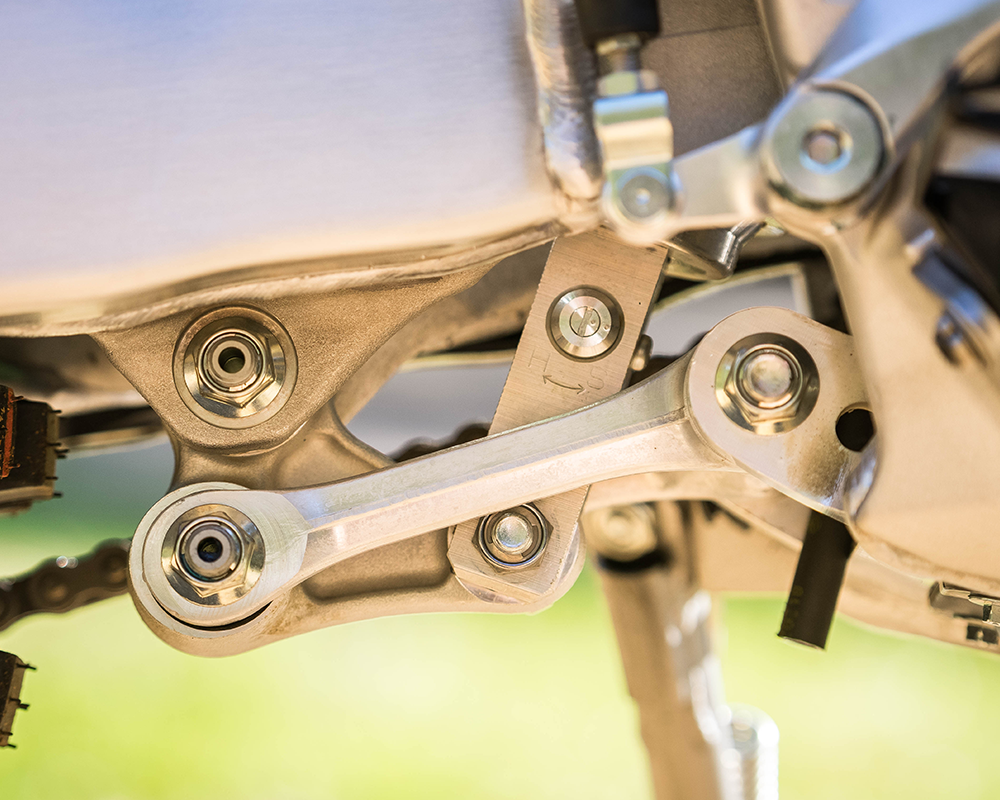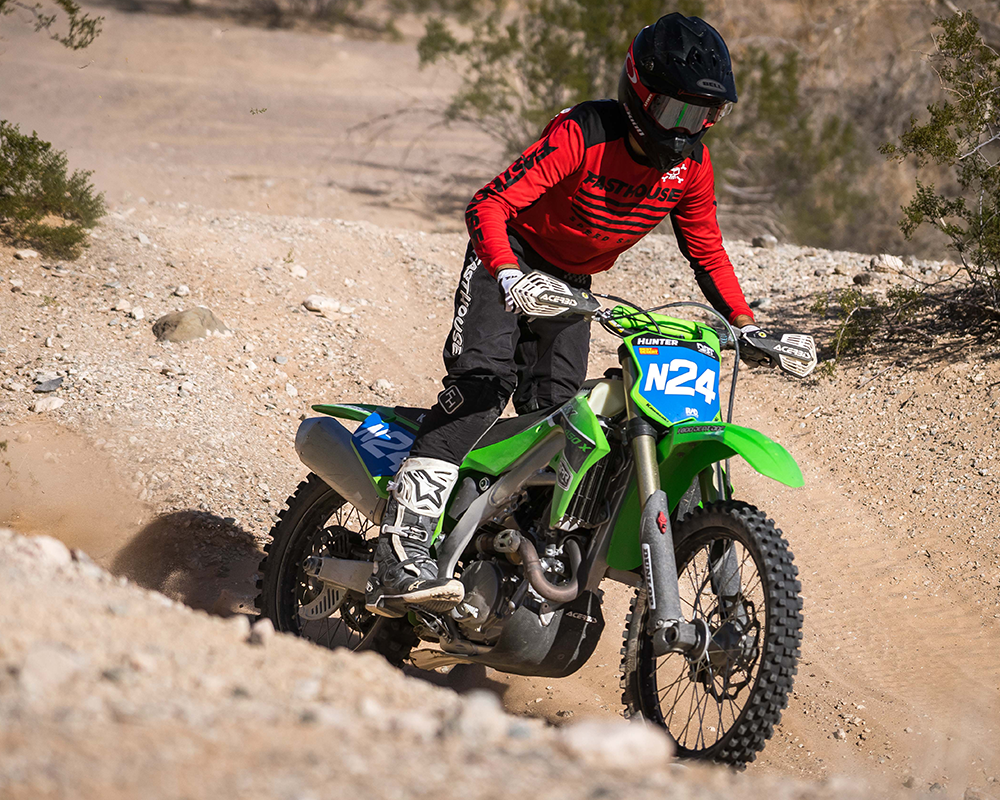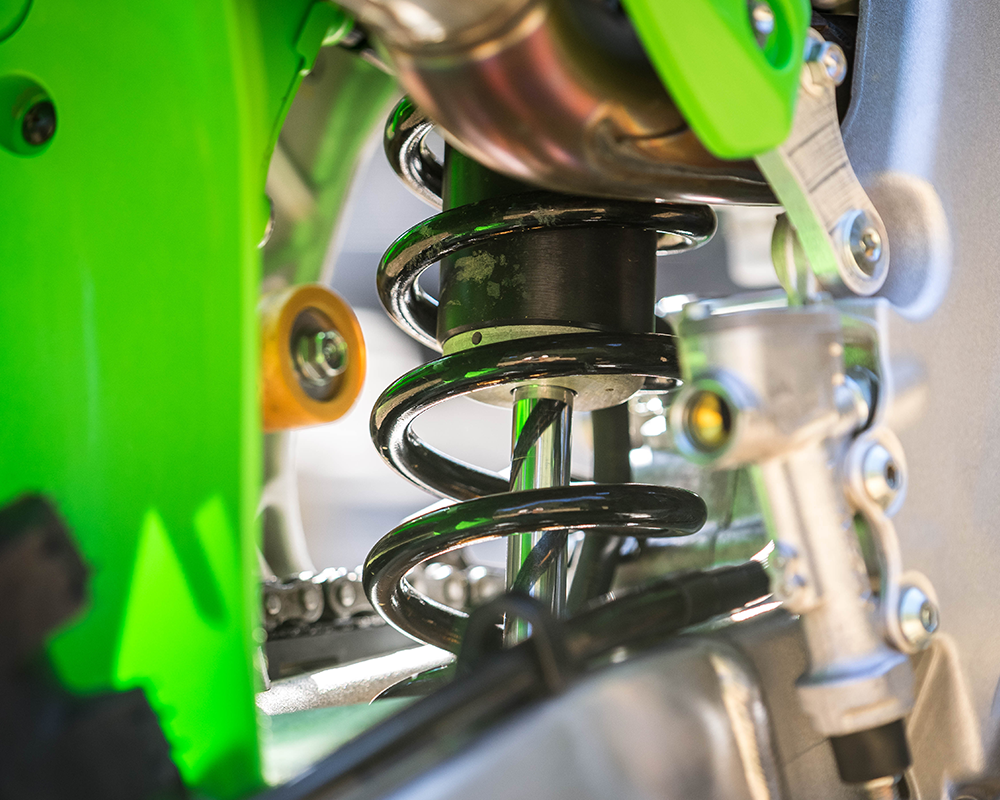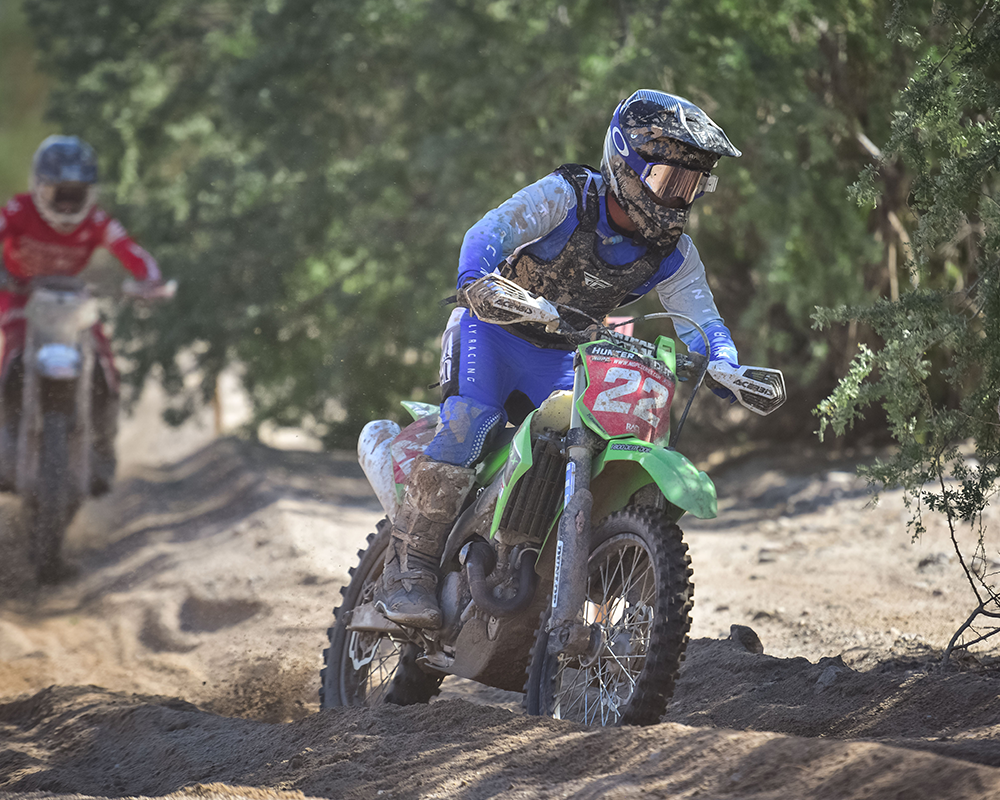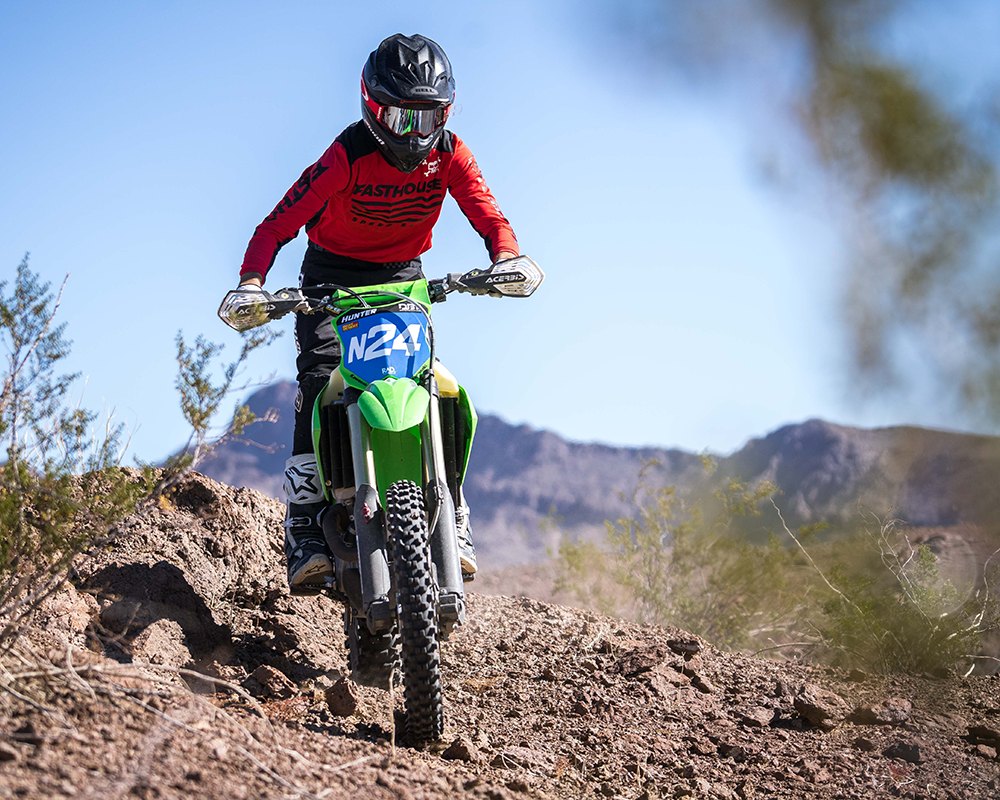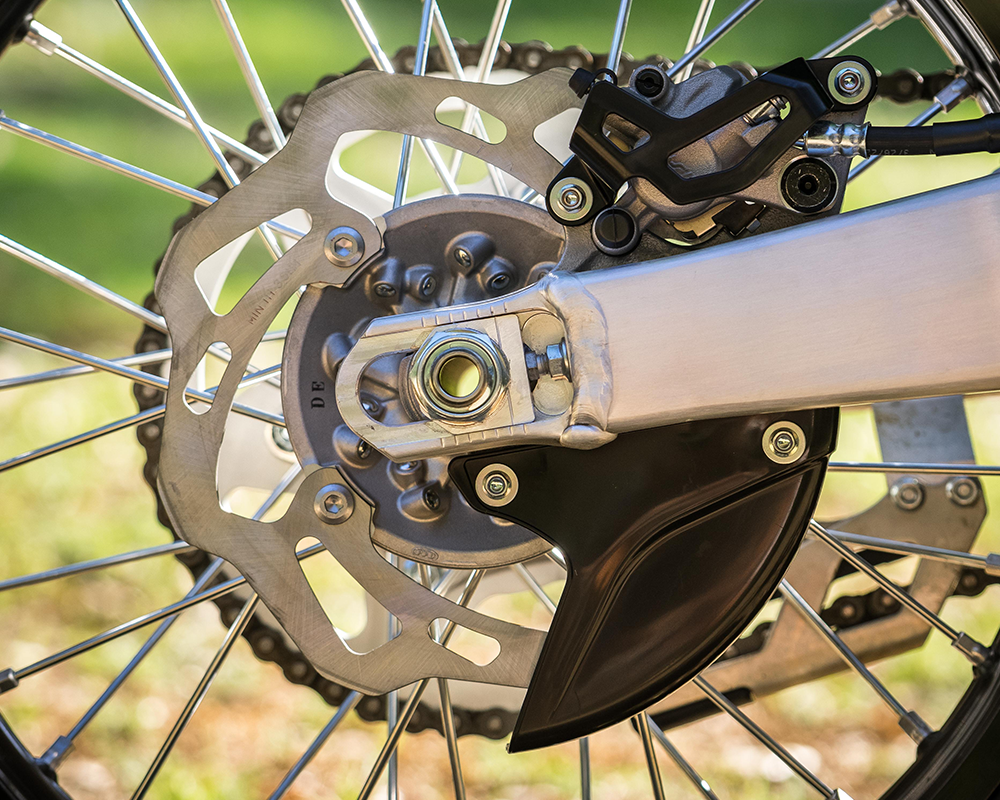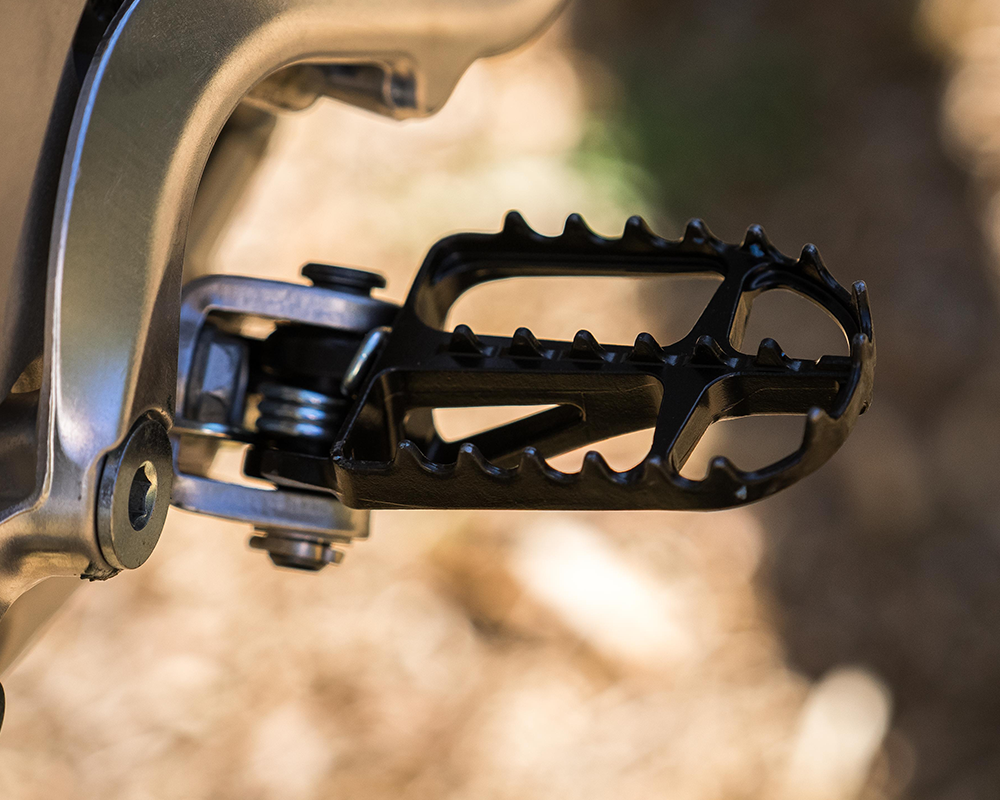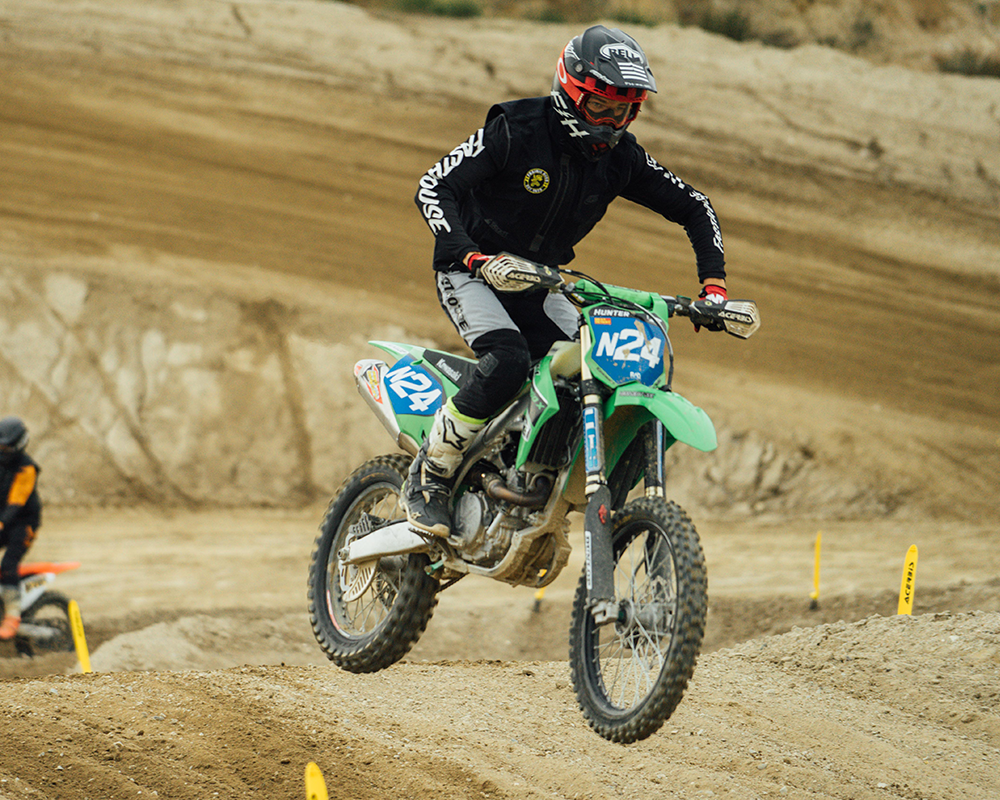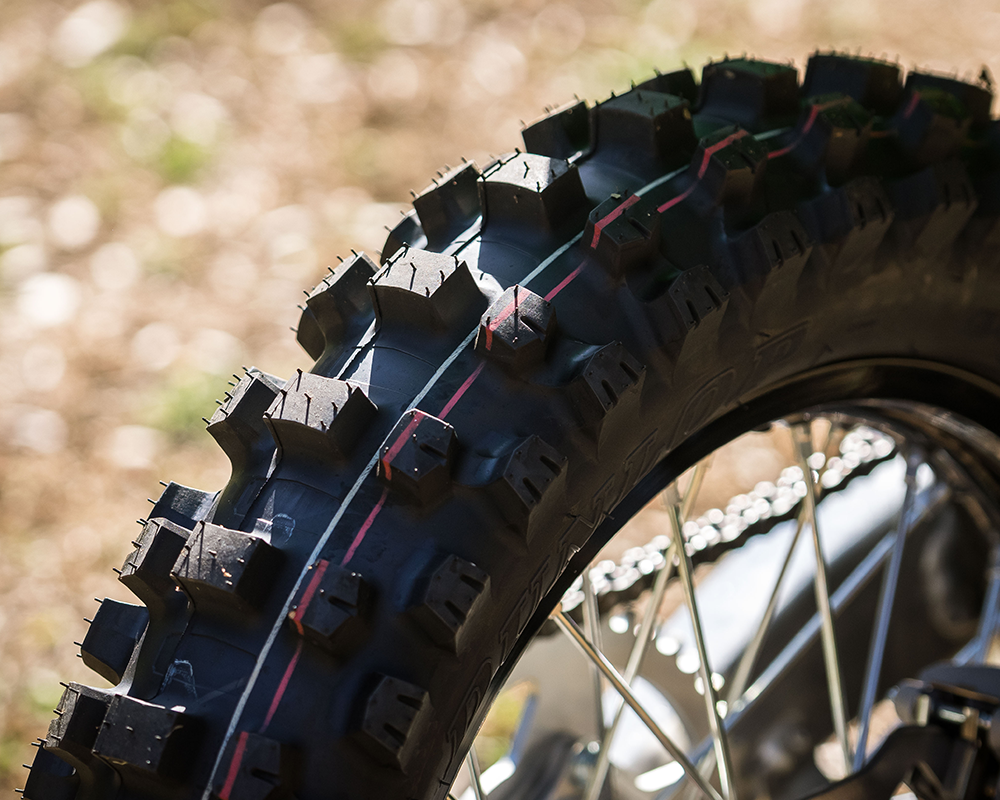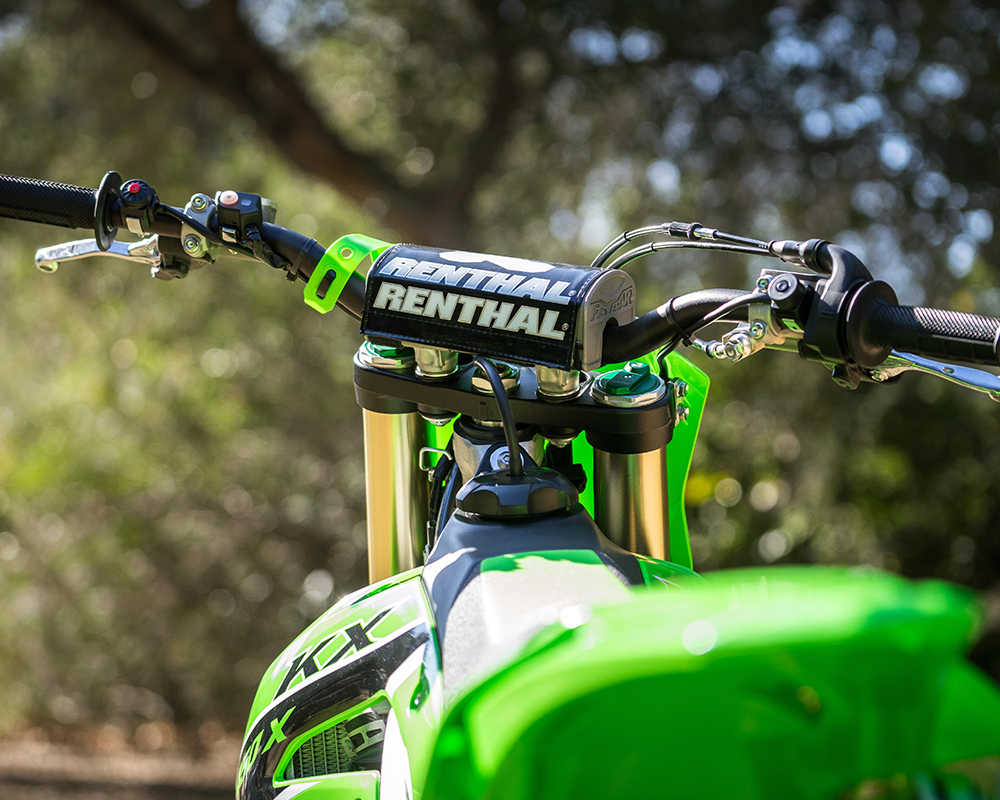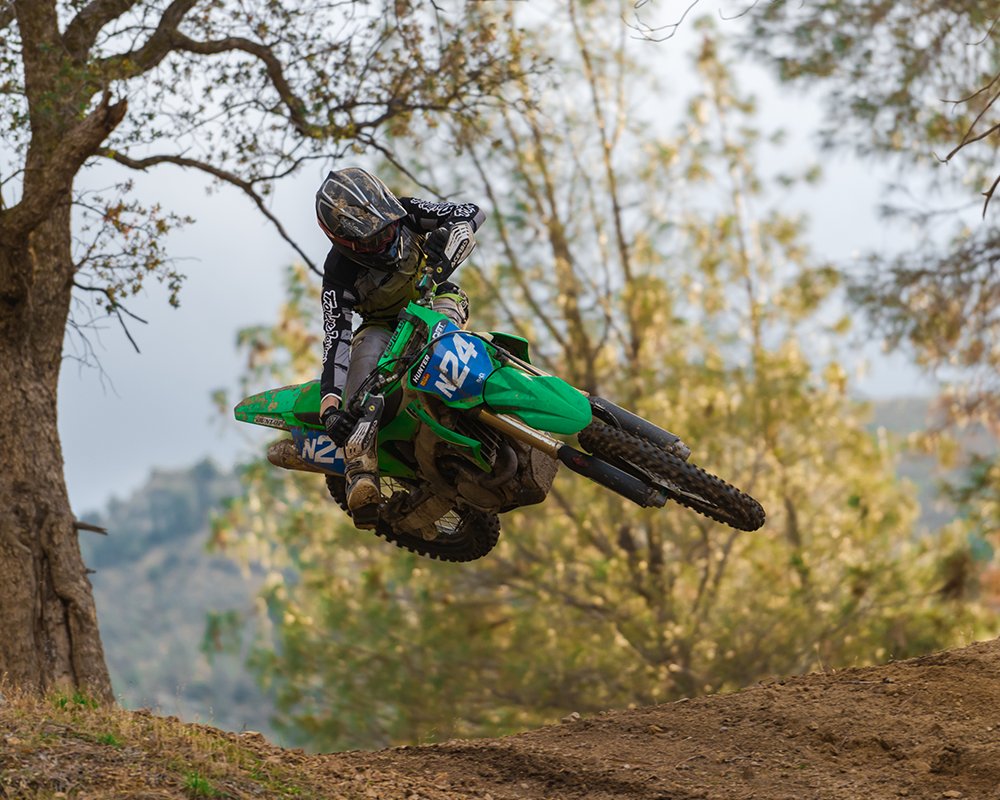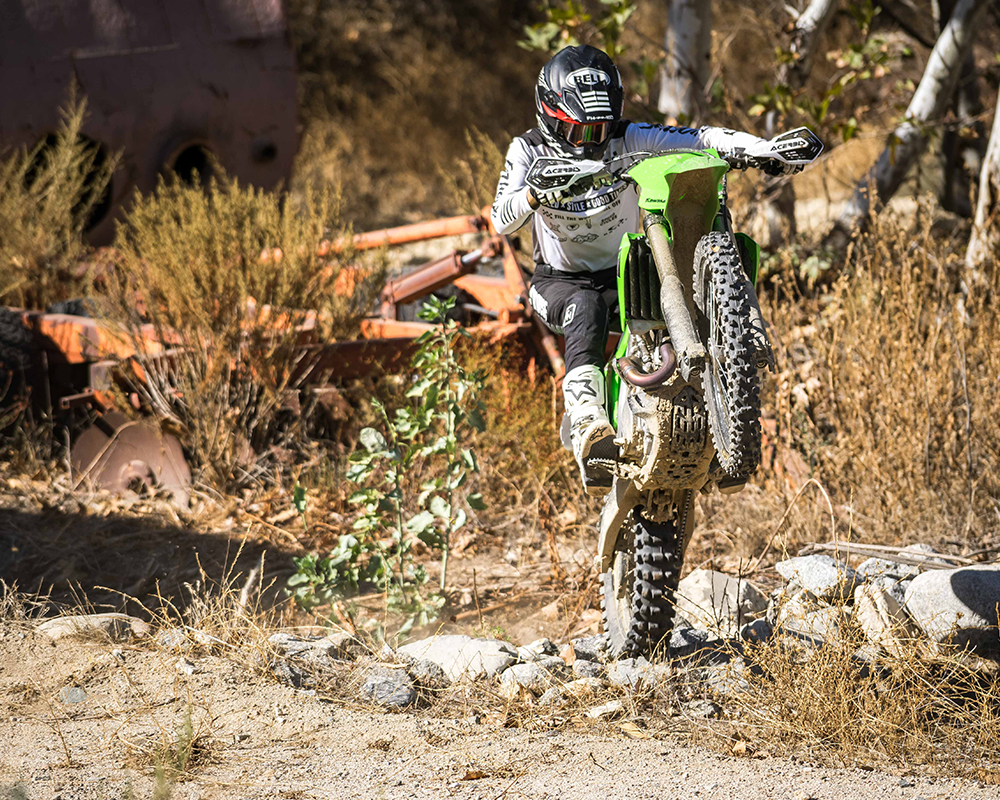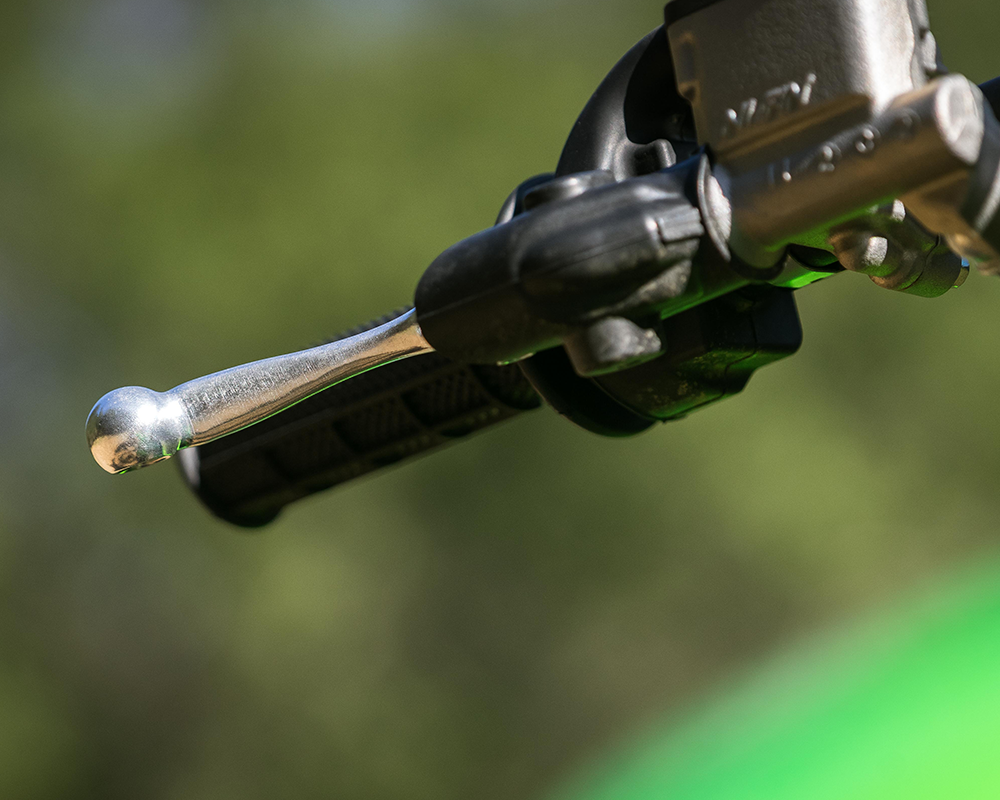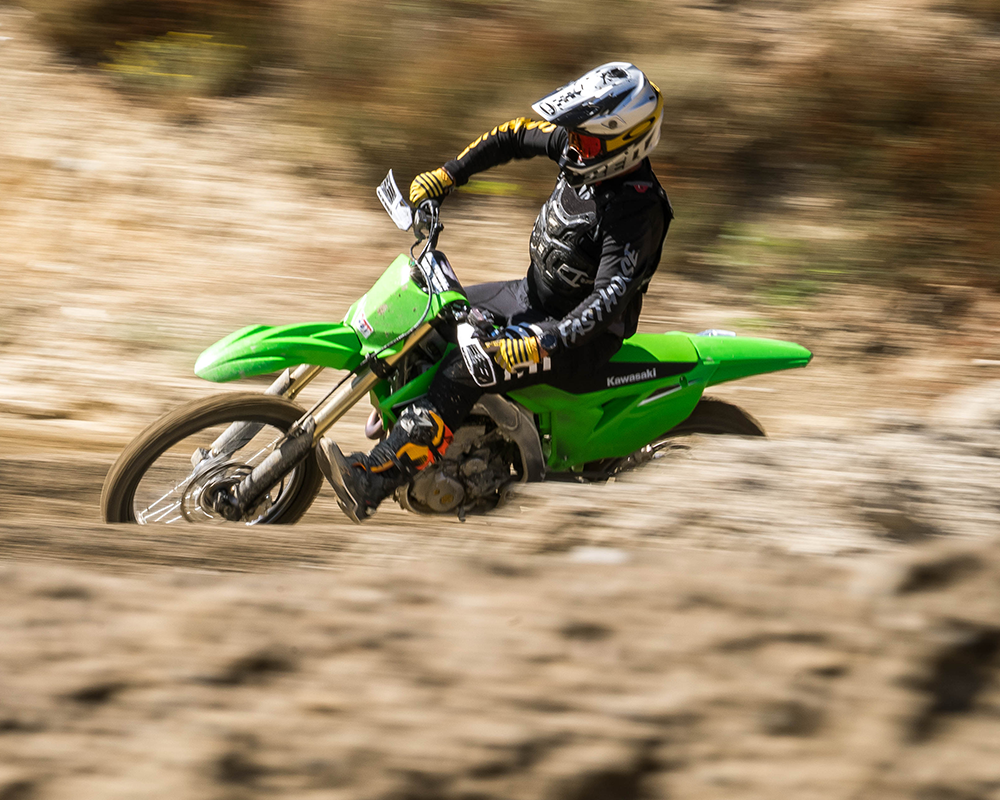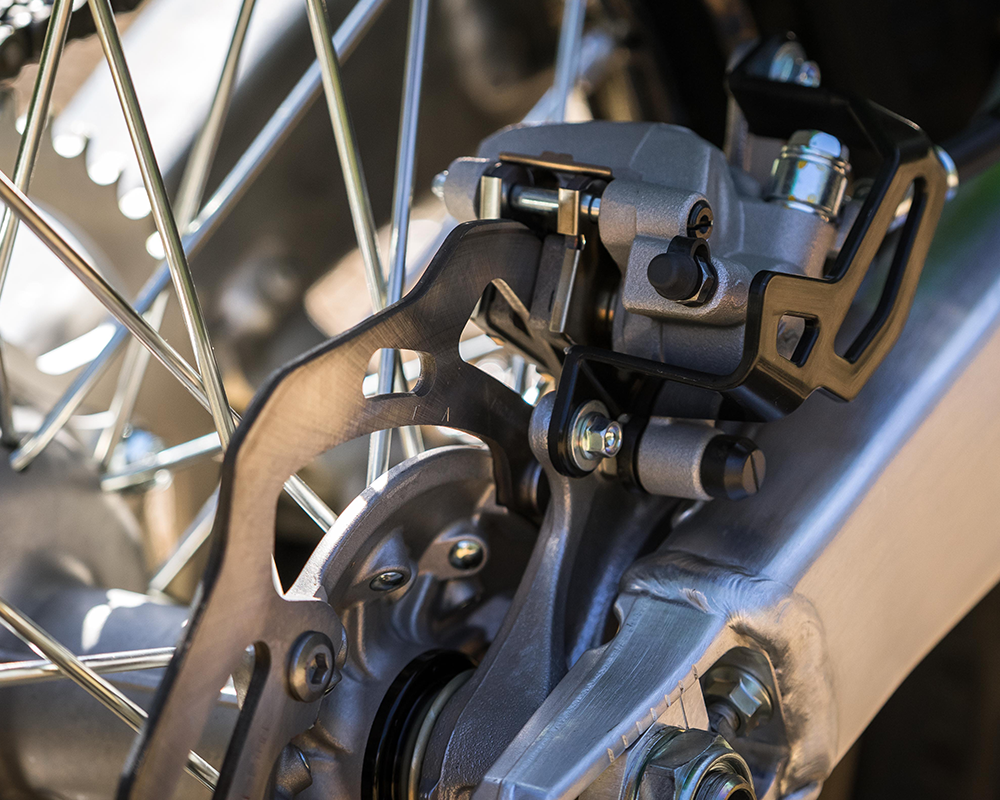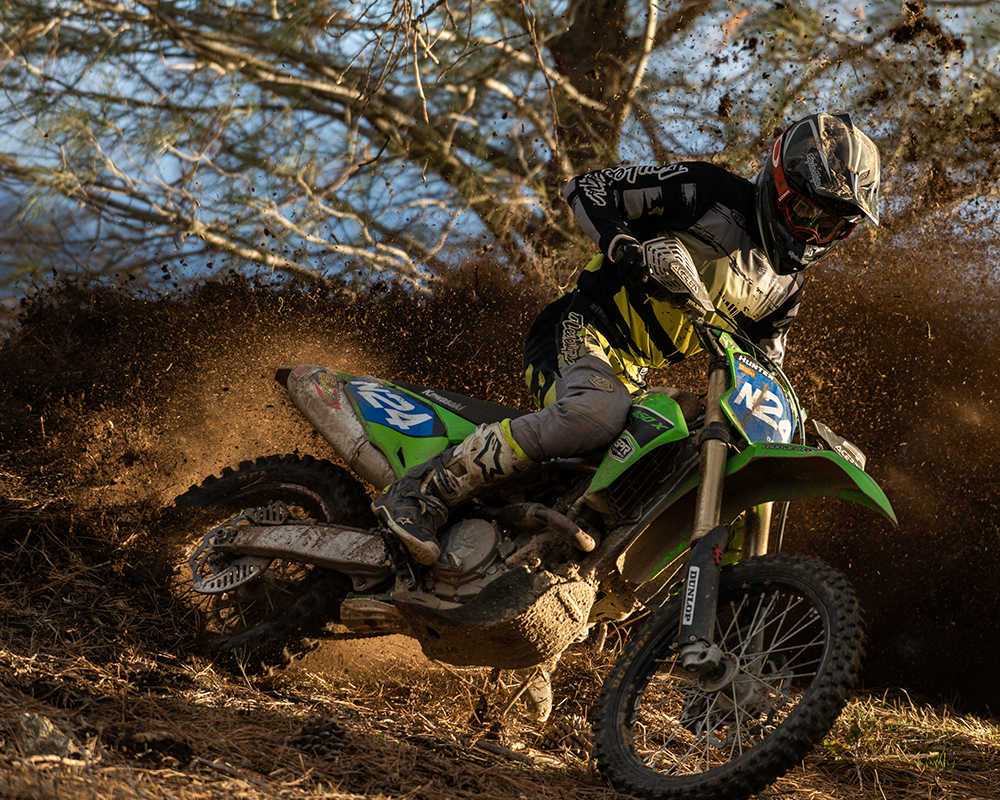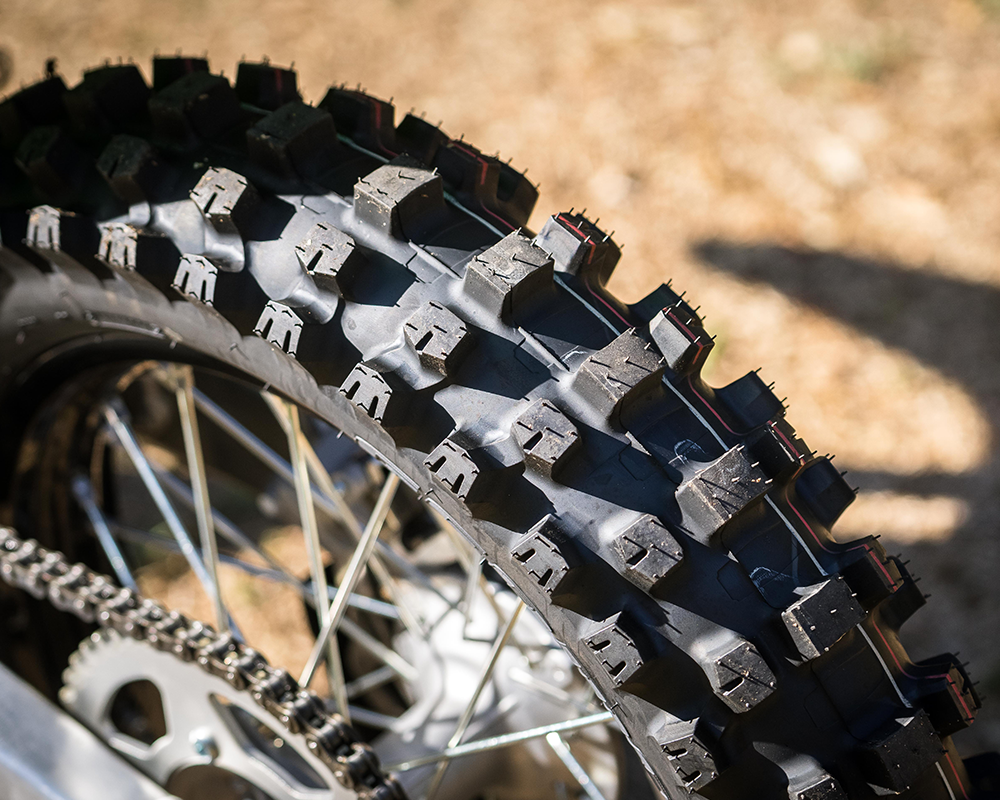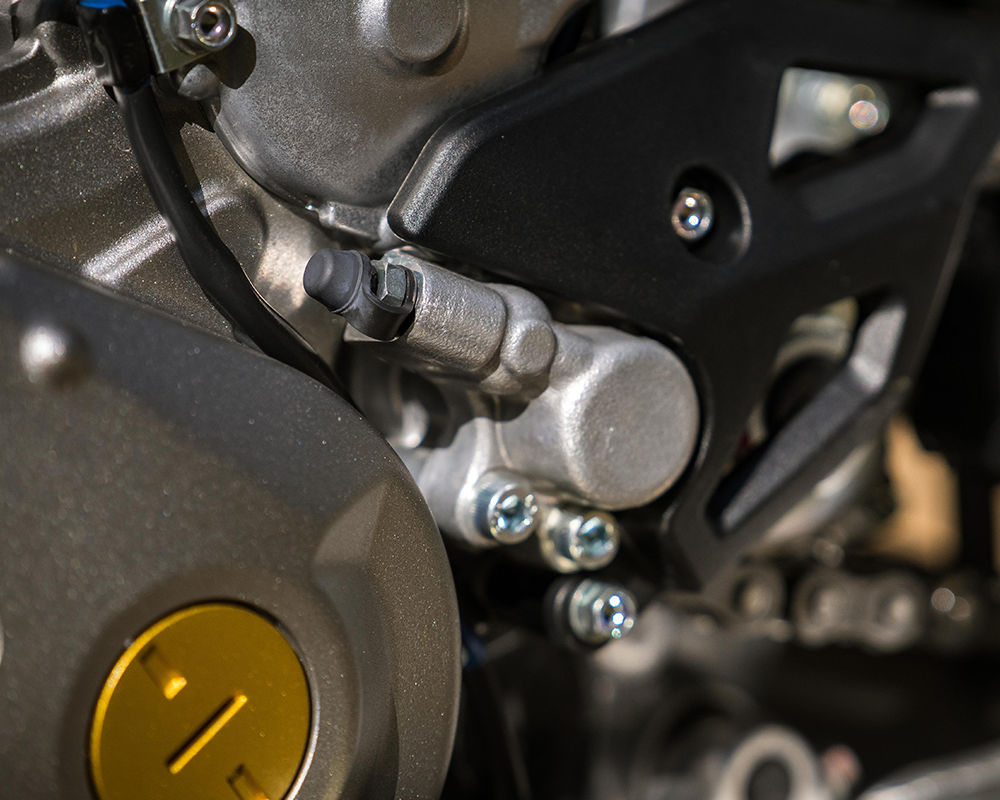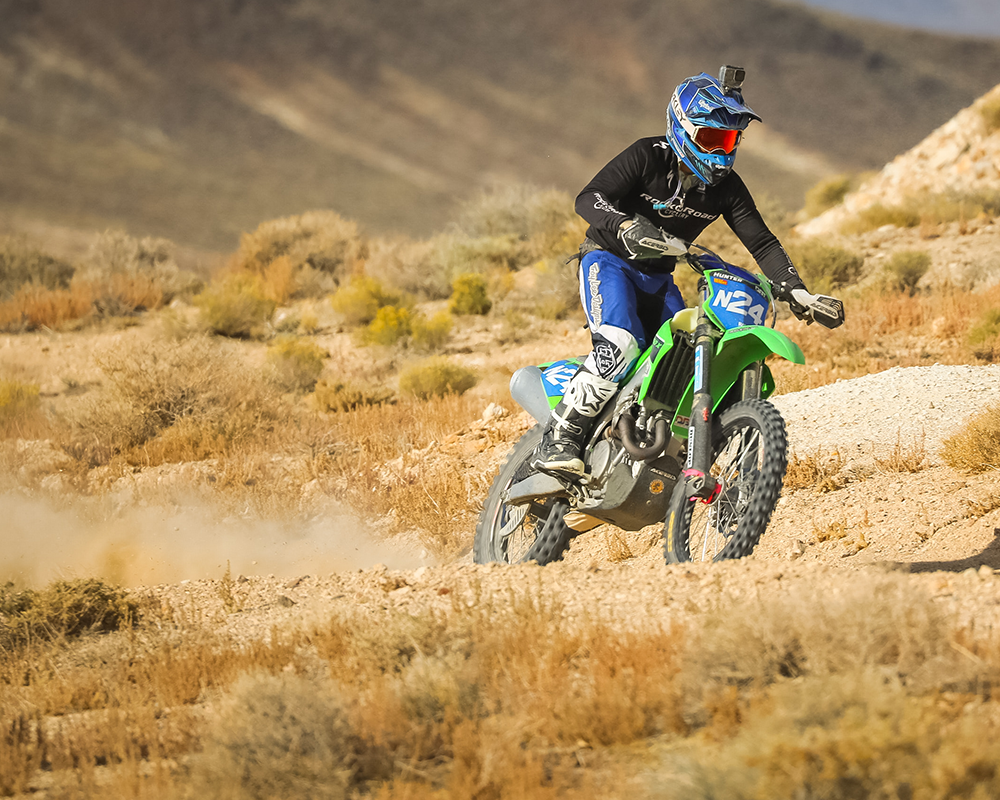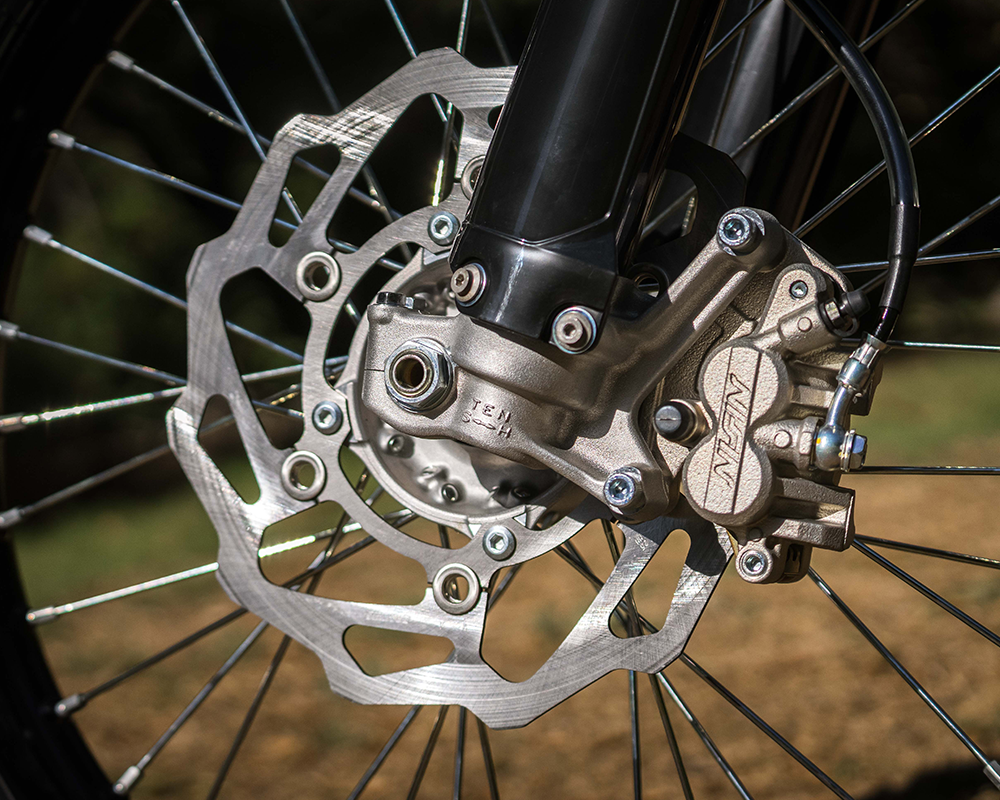2023 Kawasaki KX450X
Is Moto The New Off-Road?
MSRP: $9,799
- Easy to ride bike that appeals to the masses.
- Power is plentiful, yet easy to manage.
- Chassis handling offers tremendous comfort and is confidence inspiring.
- Lacks some off-road necessities that most off-roaders want stock.
- Being an MX bike at heart can make it tough to be competitive on extreme ends of the off-road spectrum.
Introduction
- Kawasaki's 450cc off-road racer.
Over the last decade or so, Kawasaki has continued to put out a very solid bike and build upon a successful platform in the 450cc ranks. From racing at the highest level, to media shootouts, to our own personal opinions, the KX seemingly always ranks well and appeals to the masses. In 2021, Team Green dipped their toe into the growing off-road segment and now offers an X model. The KX450X is their off-road racing platform with some of the basics to make it off-road worthy. It’s largely just the motocross bike with a few small changes, but is that a bad thing?
Changes
- No changes from 2022.
- Minimal changes from the MX model to the off-road model.
Changes are slim to none for 2023. Some new graphics give the KX a little different flare to the naked eye, but that completes all the changes for this model year. Since the inception of this generation KX450 in 2019, and the introduction of the X model in 2021, changes have been minimal. The single biggest is a larger, Belleville washer-style spring clutch design that was introduced in 2021 for an entirely new system, going away from the traditional coil-spring design that has been in place for years.
The changes from the KX450 to this KX450X model are also minimal. The usual 18 in. rear wheel, kickstand, a minimalist skid plate and rear disc guard, and softer suspension settings make up most of the changes here. Additionally, a smaller 240mm rear brake rotor (vs the 250mm rotor on the moto bike), a 51T rear sprocket (vs a 50T rear on the moto model), and Dunlop AT-81 tires front and rear complete the list of differences. Interestingly, the same fuel tank is shared between the moto and off-road bikes.
Power
- Strong, linear power from top to bottom.
- Crisp, hard hitting throttle response.
- Transmission isn't ideal for real world off-road conditions.
- Three mapping couplers come stock.
The KX motor is good. It’s not the fastest in its class. It’s certainly not the slowest in its class. It’s just really good all the way around.
The KX450X puts out a healthy amount of smooth pulling power from top to bottom. It’s very rider friendly and is universally praised by all of our test riders, both on a motocross track and in an off-road setting. The initial crack of the throttle is the one area we can struggle with at times with this engine. Quite frankly, it’s too abrupt! It’s very responsive and can be a bit jerky and tough to manage in slow speed situations - even on a motocross track. With all three couplers, we never could really get it to go away entirely without a remap of the ECU or an exhaust system, but the black (mellow) coupler was the best feeling here.
Once you get past the initial crack of the throttle and the crisp throttle response, the engine pulls smooth and hard from the bottom mostly through the top. With the black (mellow) coupler that comes stock, you lose some top end and over rev. However, switching to the green (standard) and white (aggressive) couplers brings the KX engine back to life on top. This motor doesn’t have rip your arms off pulling power, but it puts the power to the ground effectively and gets you going. It’s not so aggressive that it breaks traction or lofts the front wheel up as the throttle is turned, it really just hooks up and goes.
The transmission is a point of interest for us. As a GP racer, the 5-speed motocross transmission is enough most of the time. However, when you go to the faster desert or the tight trees, the weak points are shown. This isn’t a design flaw from Kawasaki either - most bikes in this category share the same transmission with the motocross models – but it is something we’d wish would change. Being a 450, it has the power to pull a semi-wide ratio transmission, or if we’re really getting greedy we’d like to see a sixth gear added.
To put it simply, first gear isn’t always low enough and fifth gear isn’t always tall enough in a true off-road setting. That’s not to say we couldn’t compensate with gearing to get what we needed, but it is just a tad less versatile in that way. For desert riding/racing, a 13/47 gearing combo was mostly enough to cover fast valleys and some roads without being overly tall for technical rock sections. With this gearing, the bike topped out in the mid 80’s. If we venture into the mountains and trees, 13/51 or 13/52 gearing should be enough to get you through. This bike is semi prone to stalling with a lighter flywheel feeling, but it wasn’t enough that we didn’t feel confident or enjoy the bike in this arena. Our go-to gearing for GP racing and motocross tracks is 13/50. This was the best all-around setup for our West Coast conditions.
We’ve ridden this bike with both aftermarket exhaust systems and with an ECU remap and both can help tremendously. The Kawasaki crew have a good map developed – the Chavez Map – using the KX FI Calibration Tool. It smooths out that initial hit and improves the mid-top pulling power. We’ve also ridden on an ECU mapped by Precision Concepts Racing and saw similar results. Either map would make our Top Mods list for a KX450X.
Suspension
- Soft suspension set up for slower off-road terrain.
- Quality coil-spring Showa components come standard.
This suspension is soft. As with most off-road bikes, it leans more towards tackling tree roots and rocks. And if that’s the type of riding you do, it’s really not all that bad. The softer springs and valving help keep the bike planted on the ground and drive through the small stuff whereas a stiff bike will be deflecting and bouncing across the trail. However, as speeds and/or rider weight increased, the need to go stiffer became more apparent.
In stock trim, the 49mm coil spring fork has a bit of harshness on more open terrain. The softer spring rates and valving lend the fork to riding lower in the stroke and in the stiffer valving. Going to stiffer springs will help combat this, but overall the valving is just on the soft side for faster conditions. In tighter terrain, the front end offers good feedback and stays planted, tracking through rocks and small bumps.
Out back, the Showa shock is again on the softer side, but not quite as dramatic as the fork. In big breaking bumps or deep whoops, the shock has a tendency to bottom rather quickly. The balance of the bike isn’t all that bad and the suspension works softly in unison. We ran 105-108mm of sag for a nice blend of stability and precision.
Having spent time on valved suspension, the Showa components are more than capable of getting the job done with just a little tuning for rider preference and terrain. But, don’t be afraid to put a few hours in on the stock stuff before going for a revalve - it may be exactly what you need.
Chassis - Handling
- Comfortable ergonomics for a wide range of riders.
- Bump absorption and chassis compliance is one of the best.
The Kawasaki's best feature may be its handling. The chassis is stable and predictable, soaks up bumps as good as any, and just reaps comfort to the rider onboard. The overall cockpit and rider ergonomics are some of the best out there. Pair that with the range of adjustments you can make with moving the bar mounts and footpeg mounts and this bike can truly be set up for a rider of any size. Most preferred the standard setup, especially with the bar mounts in their current position, but taller riders do appreciate being able to open up the cockpit by lowering the pegs and moving the bars forward.
The KX450X is one of the most stable and comforting chassis’ in its class and is a do-it-all machine here. Despite this bike leaning more towards stability than precision, we still experienced some head shake and twitchiness in the front end at speed. To combat this, we’ve dropped the forks to flush in the clamps and run 105-108mm of sag – on both stock and valved suspension. This helped fix the head shake issue as well as helped upon corner entrance where we felt the front end pushing quite a bit. Once into a turn, the KX holds its own and tracks well through ruts or even flat corners. It isn’t a precision machine that can turn on a dime, but it’s very neutral to corner with either the front end or rear end.
Typically, and this is more true on 450's than smaller bikes, the more you rev the bike and ride in higher RPMs, the worse the bike handles. However, this KX chassis responds well to being ridden hard and aggressive and the negative effects are very minimal when revving the bike out. More often than not, a 450 will become scary and tough to hold on to when riding in the upper RPM range. This KX shows little signs of adversity and responds well to being ridden hard like that.
We’ve tested some different triple clamps and going to an aftermarket clamp can greatly help the vague front end feel on corner entrance and through corners. Additionally, shortening the shock shaft or using a lowering link (Ride Engineering) greatly improved the chassis feel and made a good bike that much better. More on this in an upcoming build article!
In general, the KX is a longer feeling chassis than say a Honda, but again that’s not a bad thing. What it may give up in cornering performance and precision, it picks up in stability and comfort. This chassis is one of the best for hitting square edges, high speed chop, whoops, etc. and not transferring that feedback straight to the rider on board. In a sense, the KX450X is like a Cadillac at speed and is very easy to set up. It’s not so picky and precise that it demands a perfect setup to offer comfort – the window is large and as long as you’re in the ballpark, the bike will handle well.
When riding in tight woods, the longer feeling chassis is noticed – especially if ridden back to back with other bikes – but had we not gone back and forth between several bikes, we wouldn’t have been discouraged at all by this different feeling chassis.
The brakes on this bike work well. The front brake lever is not liked by many, so switching to an aftermarket lever that’s thicker and more comforting is one of the first changes we make to this bike. The rear disc on the X model is 240mm, something many will switch out the larger 250mm rotor seen on the MX bike for. It’s less touchy and provides plenty of braking power to get this bike slowed down or pivoting directions.
In our 35 hours with this bike, it’s holding up fairly well. The stock plastic is brittle and prone to breaking or cracking, and the chain guide/slider are on the weak side. However, other than those items (which many will often replace rather quickly on an off-road bike anyways), we have had zero maintenance issues. The valves are in spec, top end is strong, and the bike runs and feels healthy. We’re due for a new clutch after 30-35 hours, several of those hours being on deep sand tracks where the clutch was abused more than normal, but that’s the only maintenance item we see coming.
Conclusion
- A worthy off-road racer when setup.
- Lacks some off-road necessities.
We’ve been a fan of Kawasaki’s KX450 since this generation’s inception in 2019, and putting the X model in an off-road arena has us feeling the same. The bike doesn’t really do anything exceptionally great, but it does everything so well in a uniform package that it’s tough to beat. We’ve ridden this bike everywhere from the desert, to the mountains, to the moto tracks, and everytime we ride it, we come back amazed at how well it performs.
There are some drawbacks to this bike in stock trim – no big tank, handguards, minimalist skid plate – but as a racer, most of those items are something we’d add on or change ourselves anyways. Of course, the transmission slightly makes gearing the bike for the terrain slightly harder than if it had a 6-speed or wide-ratio tranny, but we were able to find gearing options that masked this. And all but one bike in this class face this same issue too. The power is plentiful yet friendly, the suspension can be set up very well, and the handling is safe and smooth for off-road riding.
As an off-road race bike, especially one for West Coast terrain, this package is appealing to the masses and one that all of our riders have come to like.
Recent Product Tests
Leave a Reply

